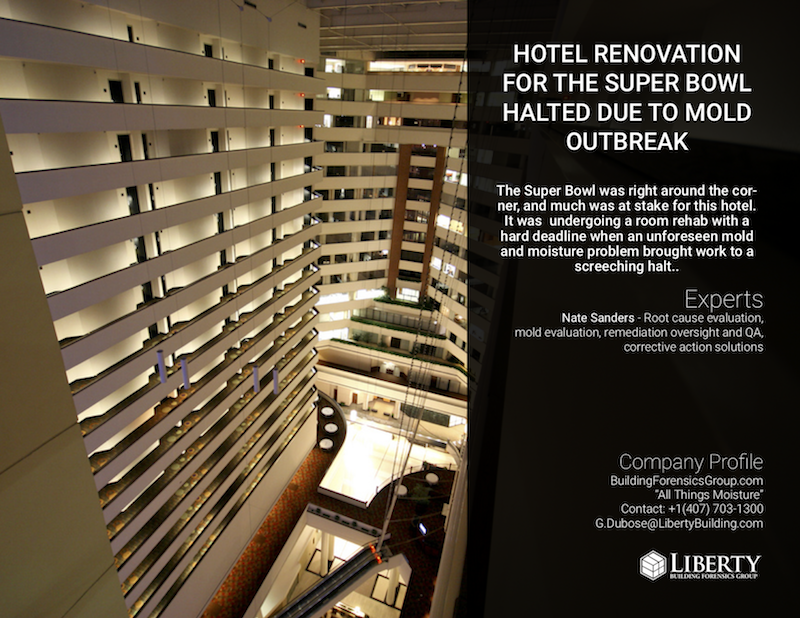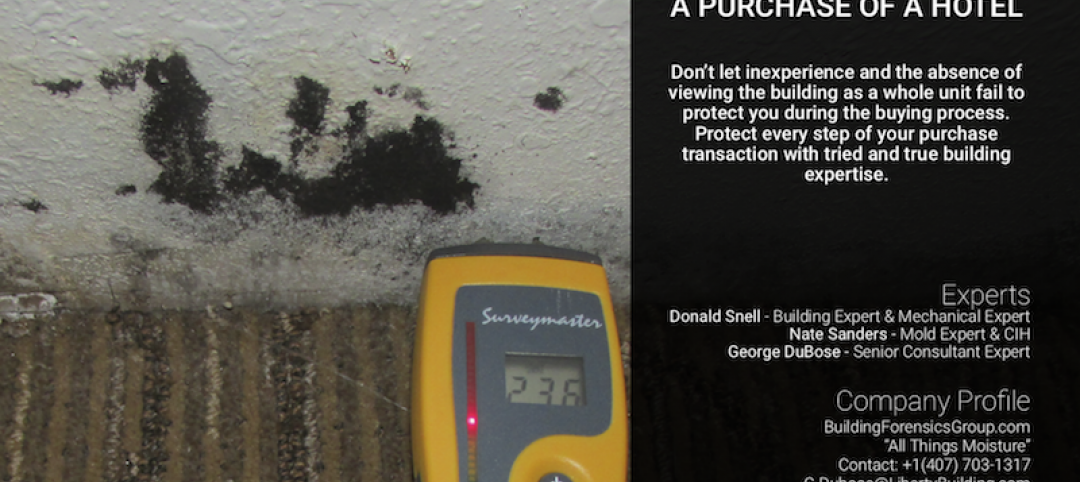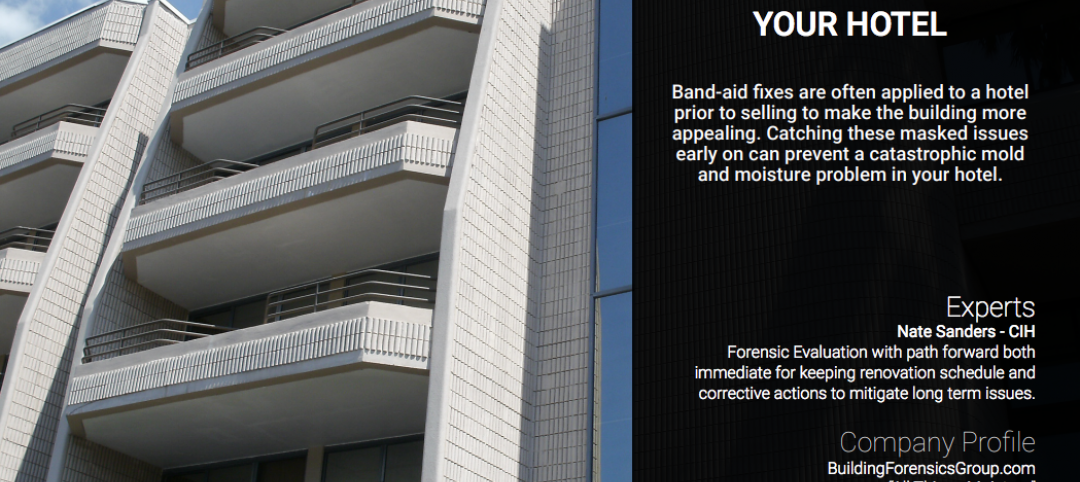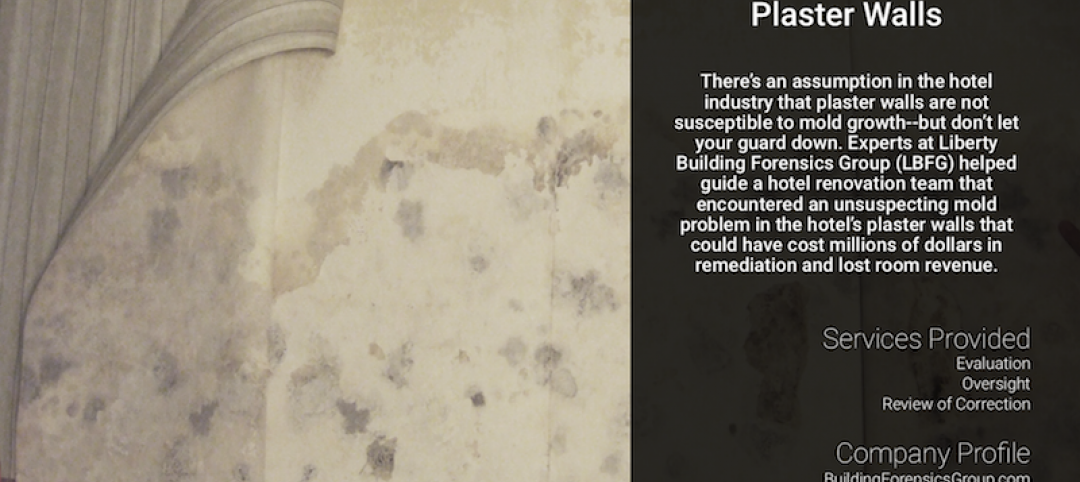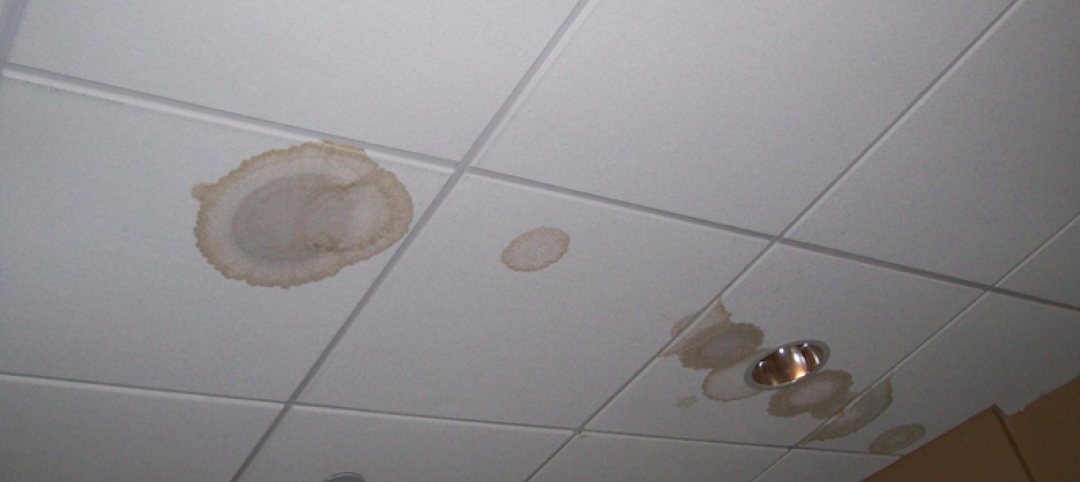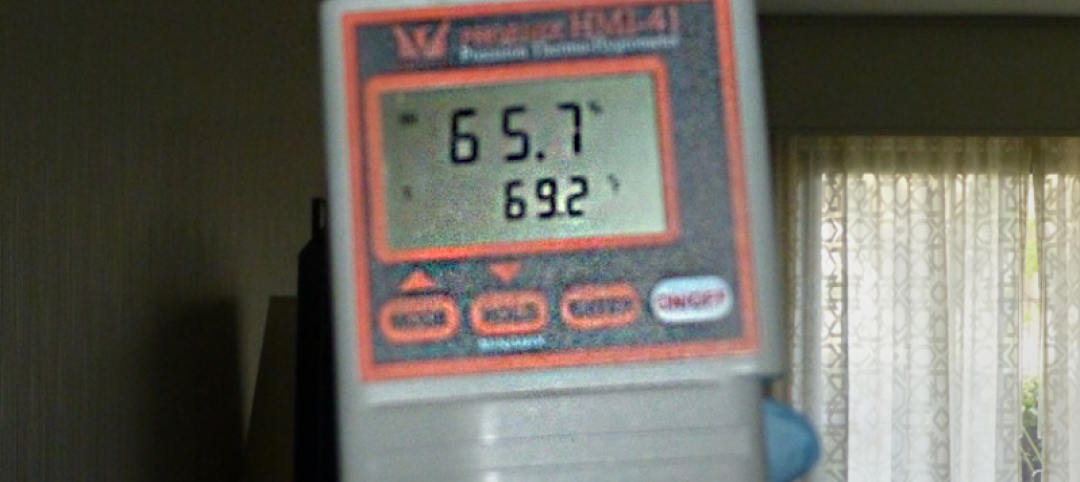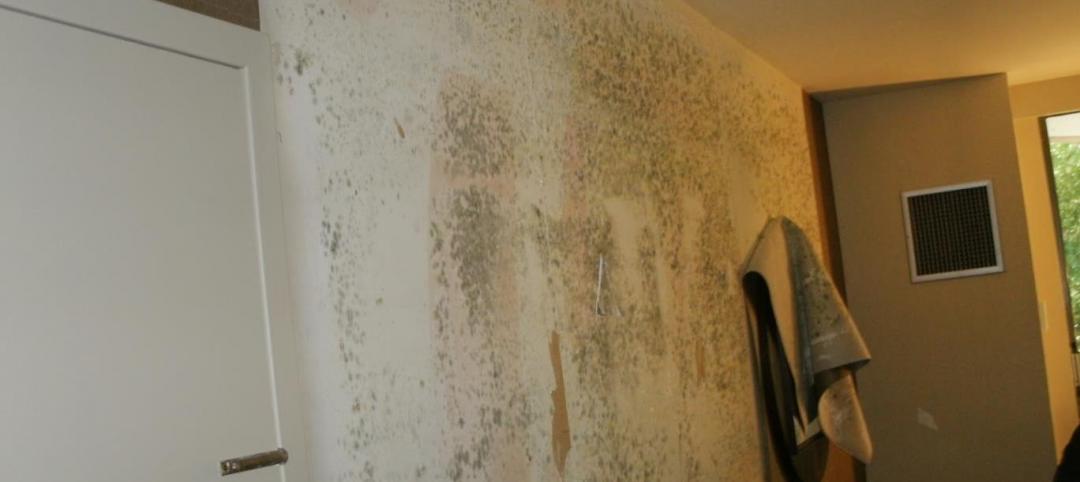Hotel renovation projects are often scheduled around upcoming events like large conventions or sporting events. For obvious reasons, these types of renovations typically have a hard deadline that cannot be missed. This puts a lot of stress on the construction and project management teams, who know that no matter what surprises may unfold during the rehab, the scheduled deadline must still be met. They must be able to overcome any obstacles while still keeping costs to a minimum.
CASE SUMMARY
This Midwestern project was a fast-track renovation of a 600-room hotel with a hard stop deadline of Super Bowl XLVI in Indianapolis. The renovation was intended to be a simple FF&E (Furniture, Fixtures & Equipment) project to upgrade the hotel’s appearance and give it a fresh feel for patrons coming to town for the Super Bowl.
During rehab of the first few rooms, the construction team pulled back the vinyl wall covering only to discover an unexpected mold issue on the vast majority of exterior walls. Panic and uncertainty immediately ensued as the project team tried to determine what needed to be done, how much it would cost, and whether the deadline would still be able to be met.
While the hotel obviously didn’t want to lose potential occupants during weeks or months of extended renovations, their primary concern was retaining the big client that came in for the Super Bowl: the NFL. This particular hotel flag had a contract with the NFL to host all NFL personnel and their business partners for the two weeks before each Super Bowl and one week following. In essence, this agreement guaranteed a three-week window during which the NFL would occupy 90% of the rooms every single Super Bowl. If the hotel couldn’t meet the hard stop deadline this year, they would be forced to relocate the NFL personnel to another hotel further away. This inconvenience would have a long-term ramification if it caused the NFL to not renew their lodging contract and instead move to a different hotel flag. Preserving this deal was a huge priority for our client, not only in the present situation but also moving forward, and so they had significant concerns over how the mold problem would be handled. This hard deadline was everything to them.
The construction and project management teams found themselves backed into a corner, unprepared for a widespread mold issue. They had assumed they were safe from any catastrophic mold issues because the Midwest is not a hot and humid climate. Realizing they had no wiggle room in their schedule, nor could they remediate the mold issue on their own, they called in Liberty Building Forensics Group (Liberty) to handle the crisis. The client knew there was nobody else that could help guide the construction team to successfully meet their hard deadline while simultaneously detecting and resolving the underlying issue so the mold wouldn’t return.
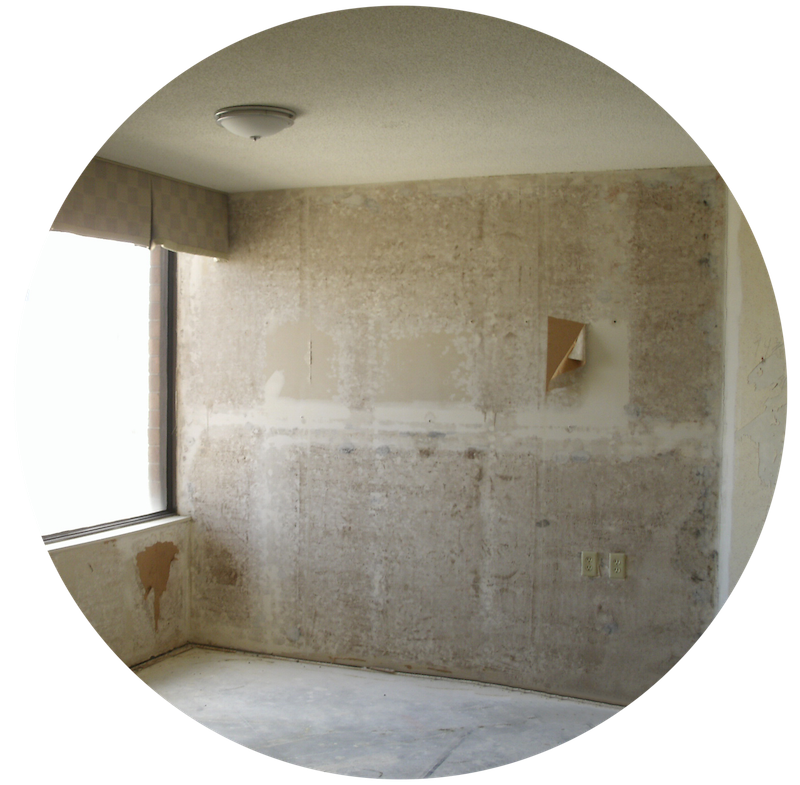
CHALLENGE
Liberty began their efforts to pinpoint the root cause by looking at water and mold patterns on the walls. They quickly noticed the mold isolation on exterior walls, and it soon became apparent that the primary issue was improper building pressurization. Liberty experts sought out the building engineer to gather more information so they could thoroughly evaluate the building systems and understand how they operated. The engineer explained that the atrium-style hotel was connected to a Class A office space. The large building was divided in two, with one side being occupied by the hotel and the other half by office tenants. Upon further investigation, it became obvious this setup was one of the key contributors to the mold problem.
Essentially, the hotel was an equity partner of the building, but a very quiet equity partner. The building systems (including HVAC, chillers, and electrical) were run by the maintenance personnel on the office space side. These individuals were incentivized to reduce costs, so whenever the office side of the building was not occupied, they powered down the rooftop units to unoccupied mode, causing the building to become depressurized. The depressurized toilet exhausts on the hotel side would try to make up air by drawing it in from the exterior walls. Once this humid evening air was pulled through the exterior envelope, the vinyl wall covering trapped the moisture. Over time, this trapped moisture had become great enough to support mold growth.
The renovation team had originally planned to put vinyl wall covering back on the exterior walls, but doing so now would have resulted in another future mold and moisture problem. Though it may not have been as much of a surprise the second time around, it still would have been very costly. The hotel liked this building and planned to be a long-term occupant with a multi-decade lease, so Liberty had to come up with a solution that pleased both the client and owner of the office space.
SOLUTION
Unfortunately, changing the operation of the HVAC system wasn’t a viable option because our client didn’t have any control over it. Suggesting a change in the HVAC system would require the cooperation of both the current office space owner and any future owners. Ultimately, this option would have put the variables out of our client's hands, thus not ensuring a complete solution.
Instead, Liberty experts had a brief conversation with the building engineer, construction team, and project management team, suggesting an instant modification in the construction process. Their recommendation was to make a building materials change by getting rid of the vinyl wall covering on the exterior wall so the wall would become breathable. The replacement material would be much more forgiving to the added moisture of the evening air.
Thankfully, this substantial change to make the wall breathable and prevent the same condition from happening again did not increase construction costs or extend the deadline of the overall project. Though we were unable to change the building from a mechanical standpoint, we were able to approach the problem from a material standpoint, making the building much more forgiving for the environment under which it was currently operating and under which it would continue to operate.
RESULT
When Liberty was brought in, the initial charge was to not only determine the cause of the mold, but to also provide oversight, draw protocols, and assist in bringing in a contractor to keep the project on schedule for the hard end date of the Super Bowl. Additional crews were brought in, and we were able to help guide the rest of the room rehab to a successful completion, with the assurance of solving the issue so the mold would not return. Even with the unforeseen remediation, new materials, and additional crews, we were able to keep extraneous costs low, only increasing the budget by 20%. Most importantly, the hotel was still able to keep the NFL as a satisfied customer.
The project team was relieved that Liberty was able to come in at a moment’s notice, quickly identify the issue and path forward, and resolve both short-term and long-term issues. By presenting the scientific background to help all parties understand the operations of the building, Liberty ensured that everyone was comfortable with the material change and corrections to the finished product, while solving the overall issue.
Without the in-depth knowledge and experience that Liberty was able to offer about how the HVAC system and building envelope intertwined, this project would not have met the hard deadline - nor would the client have had confidence that the root cause of the mold had been mitigated. An experienced consultant stands out from an average consultant through his ability to detect and truly understand intricacies such as the interaction between the hotel portion of the building with the controlling office portion of the building, and through his ability to manipulate the end product to make sure the entire building was not conducive to mold growth.
Liberty Building Forensics Group is committed to SOLVE. FIX. PREVENT. RECOVER the world’s most complex building mold and moisture failures. Our firm has project experience in the U.S., Canada, Mexico, the Caribbean, Central America, the Middle East, Southeast Asia, and Europe. Contact us at g.dubose@libertybuilding.com or by phone at 407/467-5518 or visit us at http://www.buildingforensicsgroup.com/.
More from Author
Richard Scott-AIA, NCARB, LEED AP of Liberty Building Forensics Group | Mar 1, 2019
How to protect yourself from hidden mold problems during a purchase of a hotel
Don’t let inexperience and the absence of viewing the building as a whole unit fail to protect you during the buying process. Protect every step of your purchase transaction with tried and true building expertise.
Richard Scott-AIA, NCARB, LEED AP of Liberty Building Forensics Group | Feb 7, 2019
Don't let a simple band-aid fix cause a mold problem in your hotel
Band-aid fixes are often applied to a hotel prior to selling to make the building more appealing. Catching these masked issues early on can prevent a catastrophic mold and moisture problem in your hotel.
Richard Scott-AIA, NCARB, LEED AP of Liberty Building Forensics Group | Jan 21, 2019
Hotel renovation threatened due to unexpected mold on plaster walls
Mold growth is not seen as frequently on plaster walls as it is on gypsum wallboard, primarily because there are no nutrients to support mold growth.
Richard Scott-AIA, NCARB, LEED AP of Liberty Building Forensics Group | Jan 14, 2019
Air barriers: Expectations vs. reality
When new building code requirements require high performance and innovation incentives, such as those found in green building rating systems, significant confusion and some building failure will ensue.
Richard Scott-AIA, NCARB, LEED AP of Liberty Building Forensics Group | Nov 20, 2018
Monitor these 9 vital signs to avoid widespread mold & moisture problems in your building
Many building owners and operators rely solely on a property condition assessment (PCA) to determine if they have a problem.
Richard Scott-AIA, NCARB, LEED AP of Liberty Building Forensics Group | Jul 13, 2018
Hotel renovation: More than just minding the dust
Do you know the vital signs for avoiding moisture & mold problems? Will your brand standards cause you headaches? How will you recover costs if you do get into trouble?

